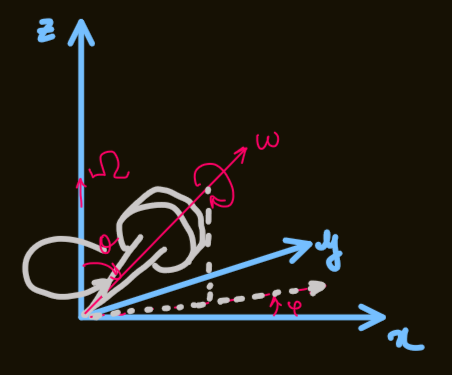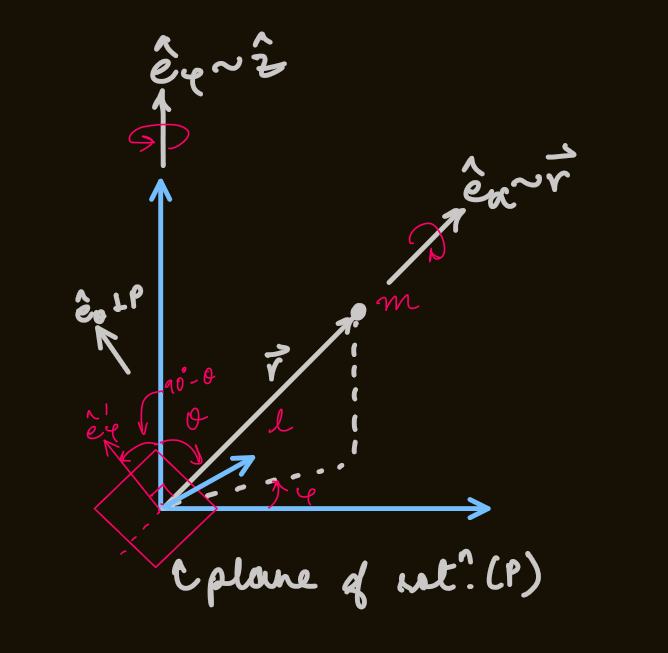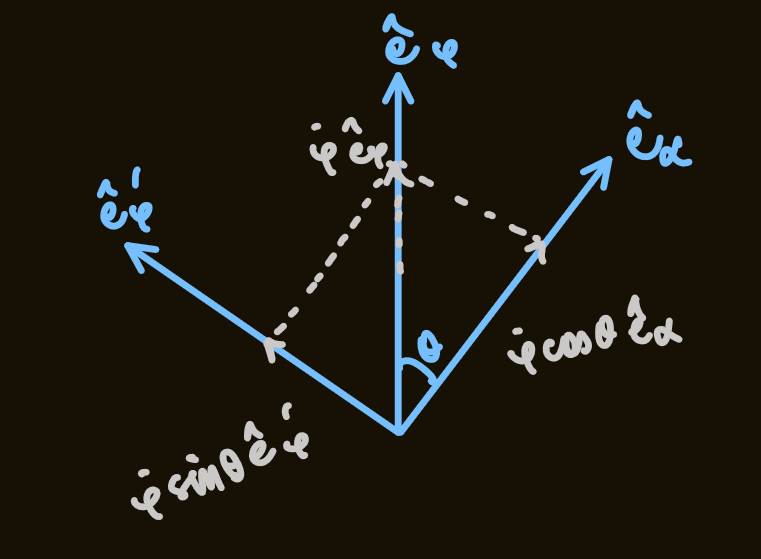PX285 - F4 - gyroscope
- considering a spinning top that can rotate on a fixed point
- it has three rotational degrees of freedom:
, , and ; but no translational degrees of freedom

- reminder: for a uniform rod of length,
, spinning about its centre of mass with an angular frequency, , the kinetic energy is given by:
where,
- the gyroscope has two moments of inertia,
and - the normal is the top symmetry axis
- if the top is spinning at at angle to the normal, the moment of inertia is
- if it is spinning about the normal, then it is
determining the lagrangian
potential energy
- suppose
is the distance from the base to the centre of mass of the top, and is the angle with the normal - the potential energy: $$V = mgl\cos\theta$$
kinetic energy
- the axes of rotation for top are represented by:
plane of rotation, due to 'wobble'
, due to rotation about -axis
, due to spin - these are not orthogonal

- defining another unit vector,
, such that and - therefore,
rotation is represented by: - taking its projection in the basis

- the spin frequency:
about - the theta rotation is represented by:
- therefore the three rotations are:
- hence, the kinetic energy is given by:
where,
the lagrangian
the euler-lagrange equation
- the euler-lagrange equation:
- there will be three equations:
- there will two rotational symmetries as
does not depend on or - looking at
and equations first, anticipating the emergence of two conserved momenta:
- considering the
equation:
- from equation
- this is a second order ODE that can be solved numerically